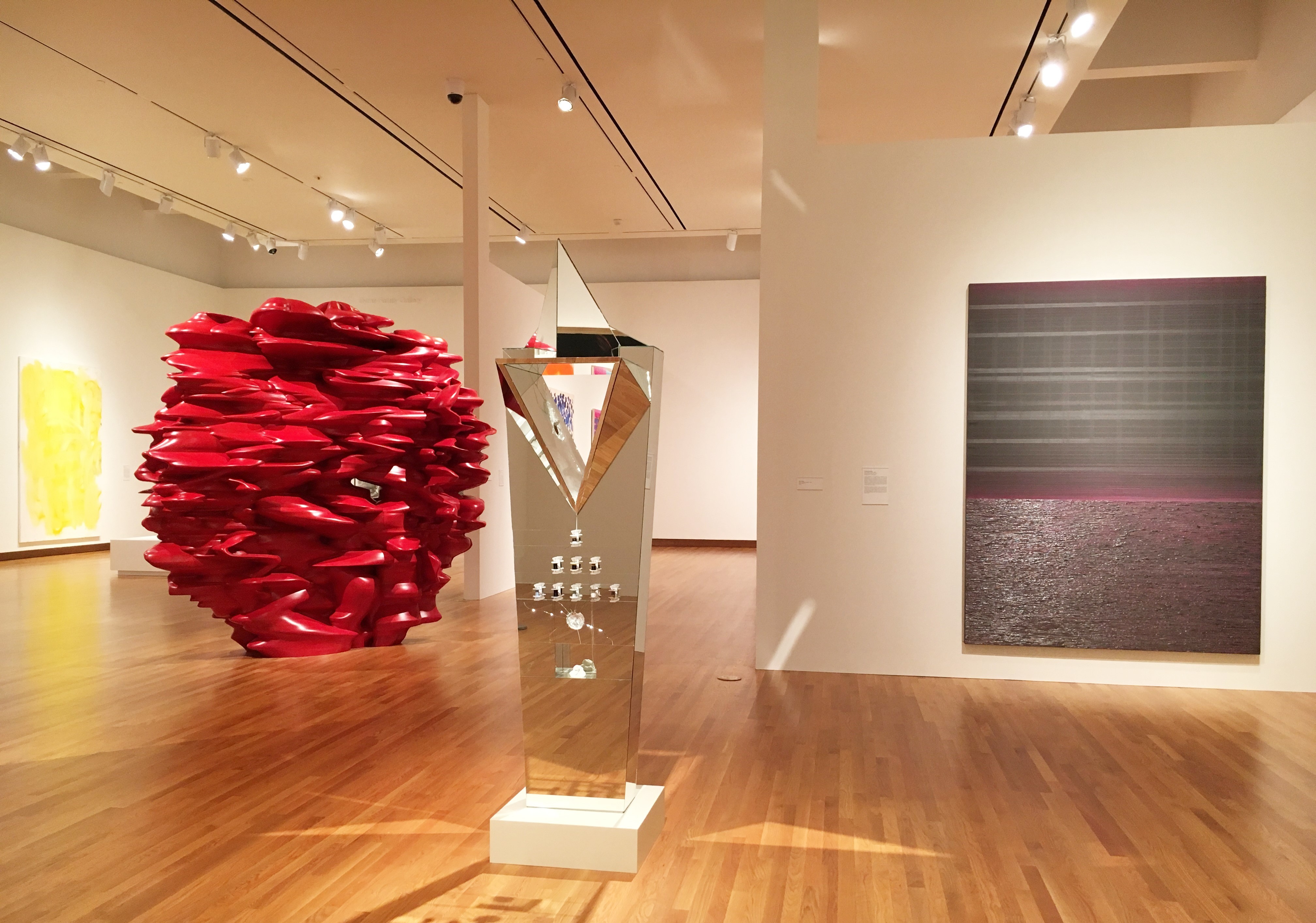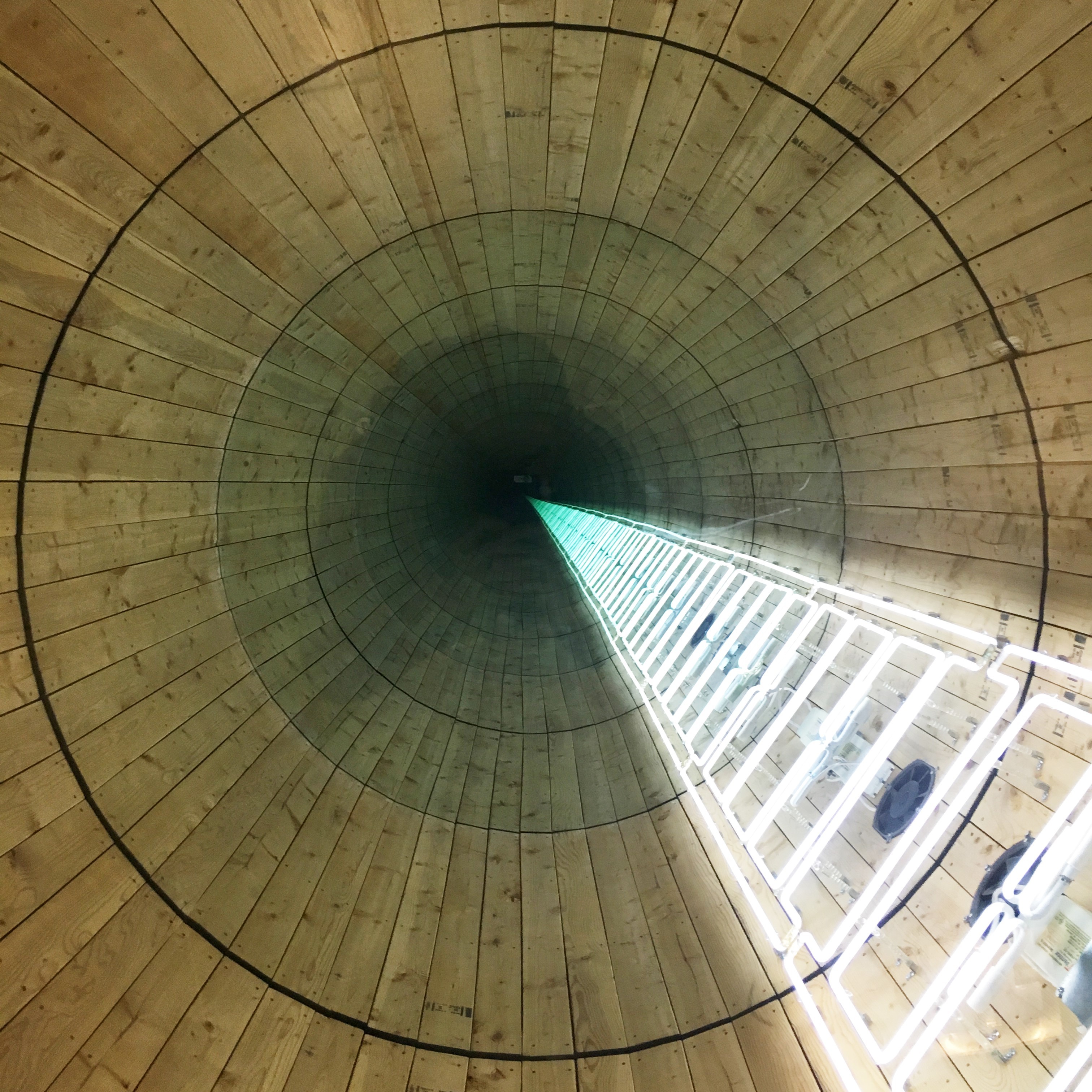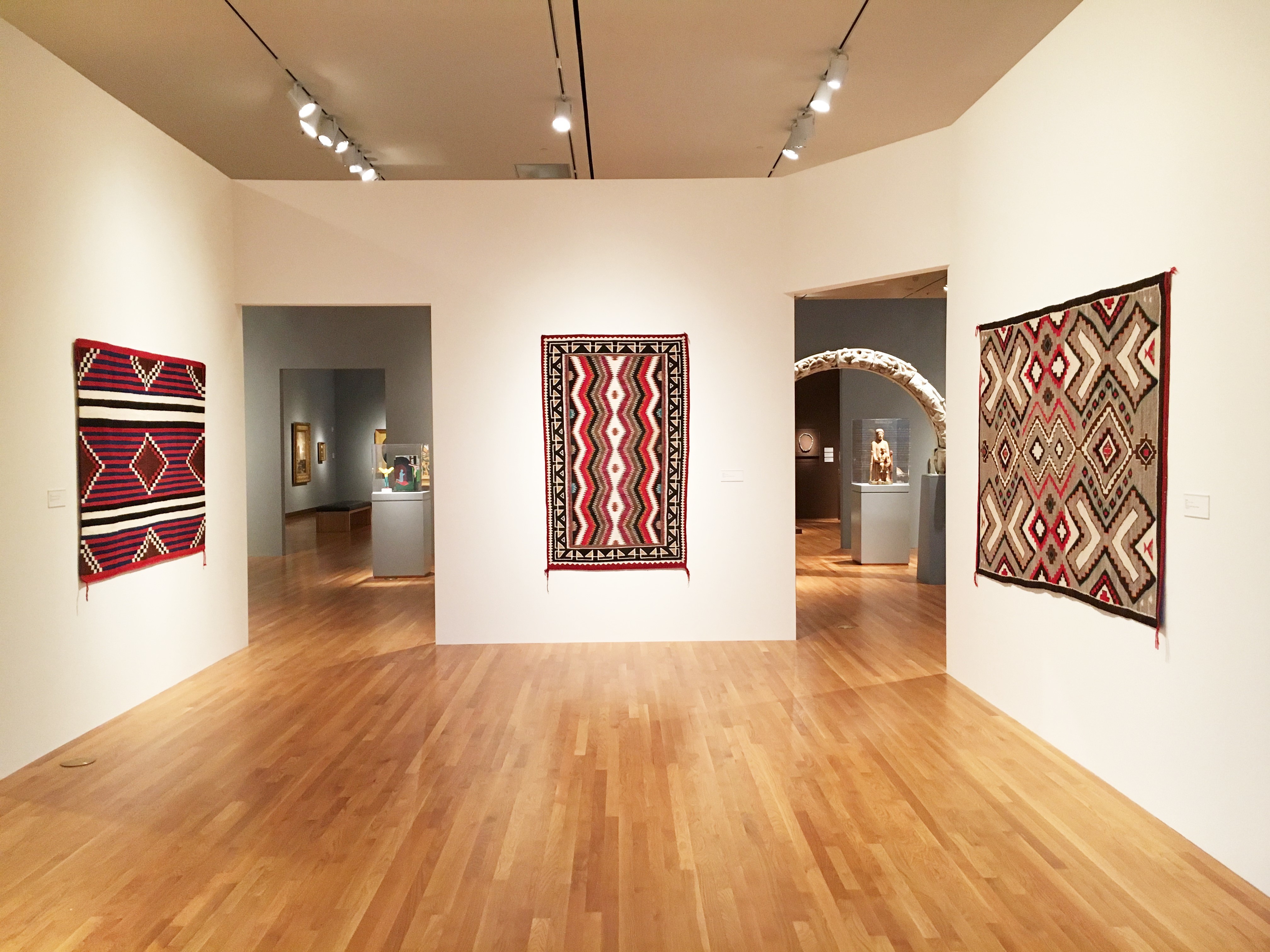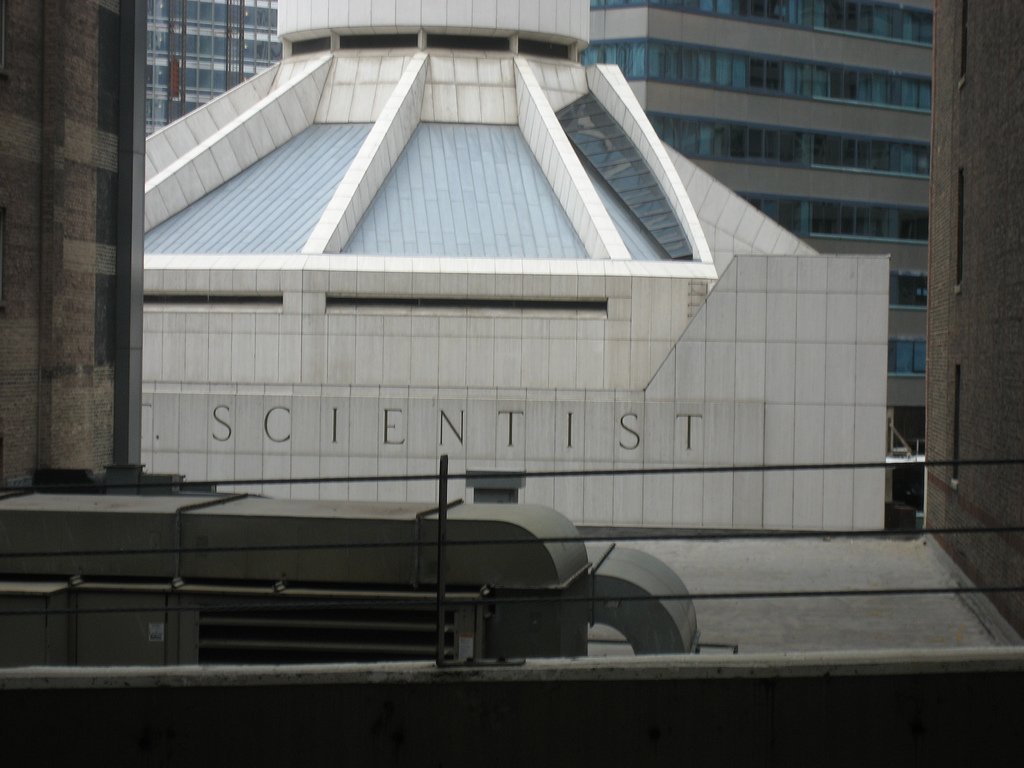Sitting in an alcove by the great hall, one word comes to mind: current. Three Ivan Navarro water towers stand boldly in the center of the museum. Behind it are works by Mark Grotjahn, Anish Kapoor, and Odili Donald Odita. These names alone are some of the hottest contemporary artists today. More importantly, however, the Nasher is current in the sense that it extracts the cool out of these artists and artworks. The museum brings relevance to contemporary culture and engages students in a way that most university museums fail to do. Even on one of the TV screens, a KAWS painting flashes through periodically.
In the Photo: Artwork by Christopher Wool, Tony Cragg, David Altmejd, and Teresita Fernandez at the Nasher Museum of Art Photo Credit: Gary Yeh/Impakter
The Nasher Museum of Art at Duke University was founded in 2005 to replace the Duke University Museum of Art. Designed by architect Rafael Viñoly, the Nasher consists of five pavilions, three of which are devoted to displaying art. While the museum exhibits a permanent collection of work from antiquity to modern, it primarily collects contemporary art with a special focus on artists of African descent. Despite its location in Durham, North Carolina, The Nasher has held relatively prominent exhibitions, including: Richard Mosse: The Enclave, Miró: The Experience of Seeing, and Wangechi Mutu: A Fantastic Journey.
Related Articles: “BRENTON CLARKE LITTLE – A BALANCE OF LIGHT AND LINES”
 In the Photo: Ivan Navarro’s “Ladder (Water Tower)” from “This Land is Your Land, 2014” Photo Credit: Gary Yeh/Impakter
In the Photo: Ivan Navarro’s “Ladder (Water Tower)” from “This Land is Your Land, 2014” Photo Credit: Gary Yeh/Impakter
Currently, the Nasher is exhibiting the contemporary art collection of Nancy A. Nasher and David J. Haemisegger. Artists in this show include Katharina Grosse, Damien Hirst, Julian Schnabel, and Richard Serra – to name a few. This exhibition epitomizes the idea of current given the sheer caliber of artists but also in terms of what many of the works speak to. The Kapoor mirrored sculpture, for example, unintentionally perpetuates today’s culture of selfies. If I had a penny for every selfie taken in front of that piece … There is also a triptych by Alfredo Jaar depicting an altered scene from Martin Luther King Jr.’s funeral, highlighting the racial divisions that persist in America. Of course, a KAWS painting in the back is a crowd favorite – graffiti art is simply hip.
For a full mindmap behind this article with articles, videos, and documents see #NasherArt
In general, the Nasher is as strong as its Board of Advisors. Nancy A. Nasher and David J. Haemisegger both serve on the board. So do LA collector Blake Byrne and Jason Rubell (son of famed Miami collectors Don and Mera Rubell). Last spring, the Nasher exhibited artists from Blake Byrne’s collection, including Mike Kelley, Glenn Ligon, and an entire room devoted to Marlene Dumas. And back in 2012, there was an exhibition of work that Jason Rubell collected between the ages of 13 and 21. In case you were wondering, his first purchase was a George Condo. At 13! Jealousy aside, most board members at Nasher are collectors of contemporary art, which transcends to the quality and content of art displayed on a regular basis.
 In the Photo: The Wilson Pavilion at the Nasher Museum of Art Photo Credit: Gary Yeh/Impakter
In the Photo: The Wilson Pavilion at the Nasher Museum of Art Photo Credit: Gary Yeh/Impakter
Also on display are Reality of My Surroundings: The Contemporary Collection and The New Galleries: A Collection Come to Light. Artists such as Pablo Picasso, Barkley Hendricks, Carrie Mae Weems, and Rashid Johnson are exhibited in these shows – and, fortunately for me, all are part of the Nasher’s permanent collection.
If you plan on visiting, the Nasher is open Tuesday, Wednesday, Friday, and Saturday from 10am to 5pm, Thursday from 10am to 9pm, and Sunday from noon to 5pm. The museum is closed on Mondays and select holidays. Admission ranges from $3 to $5 a person. Craving something to eat while you are there? The Nasher also has a café serving salads, sandwiches, and dessert.
Wanna talk art? Send me an email at gary.yeh@impakter.com or find me on Instagram @ArtDrunk.
Recommended reading: “NASHER TO OFFER NEW CONCENTRATION IN MUSEUM STUDIES”
_ _













